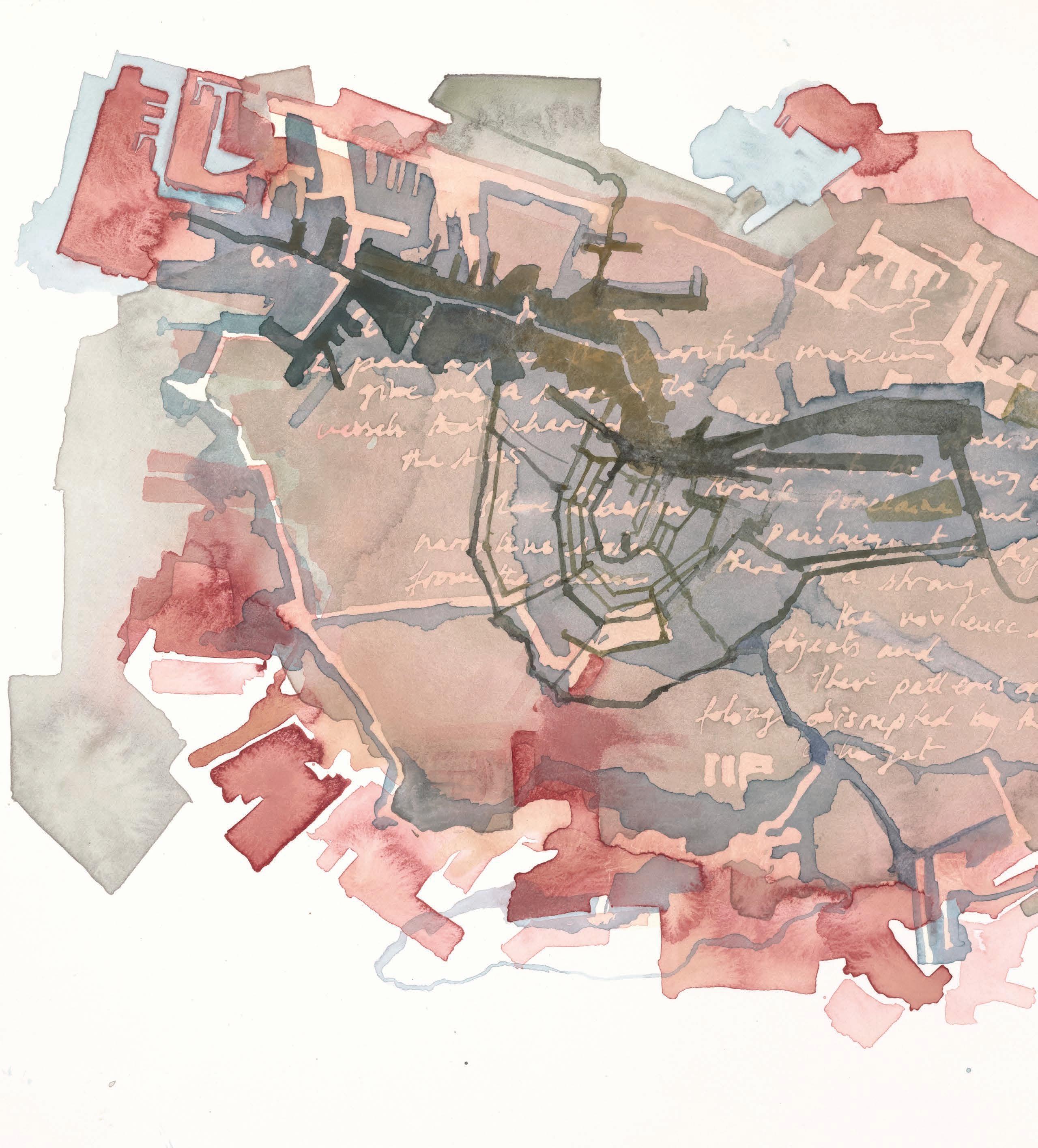
Cover Credit:


Cover Credit:
July 2024 – June 2025

08
LETTER FROM THE CHAIR
PROGRAMS
Naiza Khan, Distinguished Artist Fellow 8 - 13
Bahauddin Dagar, Distinguished Performing Artist 14 - 15
Visiting Artist Fellowship 16 - 25
Mapping Color in History 26 - 27
The State of Architecture in South Asia 28 - 29
Faculty Spotlight: Vishal Khandelwal 30 - 31
Exhibitions and Events 32 - 35 GOVERNANCE

It has been an extraordinary year for the arts at the Mittal Institute, bringing together visionary artists, pathbreaking exhibitions, and dynamic scholarly exchange.
In Fall 2024, we welcomed filmmaker and researcher Saurav Ghimire from Nepal as a Visiting Artist Fellow. Ghimire’s work, which spans fiction, experimental film, and archival cinema, investigates the deeply personal and political dimensions of memory, love, and displacement. This spring, we were delighted to host three remarkable Visiting Artist Fellows: Parul Gupta from India, Masuma Halai Khwaja from Pakistan, and Abir Abdullah from Bangladesh. Gupta’s immersive sculptural installations explored the interplay of light, geometry, and space, while Khwaja’s fiber-based works powerfully addressed contested histories of mi-
gration and identity. Abdullah brought a compelling photographic lens to climate migration in Bangladesh, offering a vital perspective on the lived impacts of environmental change in the region.
We were honored to bring acclaimed artist Naiza Khan to campus in April 2025 as our Distinguished Artist Fellow. Khan is a multidisciplinary Pakistani artist whose work delves into themes of land, body, and memory through her drawings, paintings and films. She has won numerous international awards and was invited to participate in Pakistan’s inaugural pavilion at the 2019 Venice Biennale. She spent 10 days in residence at the Mittal Institute, and through a series of talks, class visits, object study sessions, and a public lecture in partnership with the Museum of Fine Arts, Boston, Khan deepened our engagement with crit-
ical issues in South Asian contemporary art and expanded conversations across disciplines.
In October, the Mittal Institute welcomed Ustad Bahauddin Dagar, master of the rudra veena, as our Distinguished Performing Artist in Residence. A revered figure in Indian classical music and a bearer of the Dhrupad tradition, Dagar performed a concert, taught workshops, and spoke in classes across Harvard, offering rare access to one of India’s most profound musical lineages.
This year also marked continued growth with key faculty-led research programs and exhibitions. The traveling exhibition, Architectures of Transition – Emerging Practices in South Asia, led by Prof. Rahul Mehrotra, expanded to new sites across the region, foster-
ing vital dialogues around design, climate, and community practice. HUM SAB EK (“We Are One”), an exhibition co-curated by Prof. Satchit Balsari, was first developed at Harvard and rooted in fieldwork with SEWA in India, and recently started its journey across the globe, stopping in New York City, Washington, D.C., and Geneva, Switzerland, between September 2024 and June 2025. Prof. Jinah Kim’s Mapping Color in History reflects our commitment to object-based research, interdisciplinary collaboration, and sustaining cultural knowledge.
As we celebrate these achievements, we express our gratitude to the Arts Council members for their dedication and insight.
We look forward to what lies ahead in the coming year and to your continued
engagement with the Institute. Thank you for your support and partnership in nurturing the arts at the Mittal Institute.
Warm regards,
DIPTI MATHUR
Chair,
Arts Council
Of

“Art plays a crucial role in bridging ideas across diverse regions, cultures, and conflicts. It fosters empathy and enriches our understanding of our shared humanity”
— NAIZA KHAN
In April 2025, the Mittal Institute welcomed Naiza Khan, a highly acclaimed visual artist from Pakistan, as the Institute’s second Distinguished Artist Fellow (DAF). Naiza Khan’s multidisciplinary practice spans drawing, sculpture, archival material, and film. Her work is rooted in critical research, documentation, and mapping-based exploration, raising significant questions about colonial history, collective memory, and the impact of old and new infrastructures. Her work engages deeply with museum collections and the circulation of objects linked to migration across the Indian Ocean, offering a critical lens on contemporary issues of borders and migration. Based between London and Karachi, Khan continues to create art that bridges personal and political histories.

“It is an extraordinary honor to have such an accomplished artist with us at the Mittal Institute,” said Hitesh Hathi, Executive Director of the Mittal Institute, after Khan’s nomination. “It provides a wonderful opportunity for students and faculty alike to interact and engage with one of the most celebrated artists working in South Asia today.”
Khan trained at the Ruskin School of Art, University of Oxford, and completed her master’s degree at the Centre for Research Architecture, Goldsmiths, University of London. She set up her studio in Karachi in 1991 and began to teach at the Indus Valley School of Art. She also worked with artist communities in Pakistan and across the region through the establishment of an artists’ network of workshops affiliated with the Triangle Network.
“Art plays a crucial role in bridging ideas across diverse regions, cultures,
and conflicts. It fosters empathy and enriches our understanding of our shared humanity,” noted Khan before arriving at Harvard. “I eagerly anticipate my time on the Harvard campus, where I aim to engage in impactful exchanges and share my work with students and the wider Harvard community.”
During her residency at the Mittal Institute, Khan delivered a public lecture, where she presented her powerful work that weaves together themes of land, body, and memory through drawing, sculpture, archival material, and film. Her film, “Mapping Water,” was screened at the Mittal Institute’s Annual Symposium in April 2025. Khan’s fellowship also included visits to the Metropolitan Museum of Art in New York and Boston’s Museum of Fine Arts.
The Distinguished Artist Fellowship (DAF) supports the artistic and research interests of leading artists from South Asia. A selection com-

mittee, comprising Harvard faculty and contemporary South Asian art experts, nominates a DAF in recognition of the artist’s contribution that brings forth critical issues relevant to South Asia through the lens of art and design. In addition to engaging with students and faculty across the university, the DAF has opportunities to access research archives at institutions such as the Harvard Art Museums, the Carpenter Center for Visual Arts, and the Harvard libraries. The prestigious fellowship thereby provides a platform for the artist to share their work widely while inspiring new ideas and future projects.
Watch Naiza Khan’s lecture at Harvard:




Prior to her arrival on campus, the Mittal Institute spoke with Naiza Khan about what being the Distinguished Artist Fellow 2025 means to her and her hopes from the experience.
When you first learned about your nomination and selection for the Distinguished Artist Fellowship, what excited you most about this opportunity?
I’m deeply honored to share my work at Harvard. Archival material and documentation is a core element of my practice, so I’m excited to explore the University’s cartographic archives and climate-related paintings and photographs. I look forward to engaging with the vibrant community fostered by the Mittal Institute’s Climate Platform and the Institute’s dynamic program of cultural and intellectual exchange.
Have you always been drawn to the arts? Can you share the story of how your journey as an artist began?
I was a bit of a nerd at school, spending much of my time in the art studio! I was fortunate to have amazing professors in art college—more like mentors or ustaads —who guided me in both craft and the ethics of becoming an artist. My mother, an ac-
complished artist, taught me to look critically and draw, while my father’s engineering background, knowledge of materials and city planning, and sheer hard work influenced me during my early years. Together they both instilled in me a sense of how the production of ideas and images takes time, thought, and focus. While studying Fine Arts at the Oxford University was when things became
clear, and I had the time to immerse myself in work and all the objects, texts, images spanning across time and space that I had access to through the Bodleian Library, Ashmolean, and Pitt Rivers Museum. Our studios welcomed influential artists such as Mona Hatoum, Krishna Reddy, and K.G. Subramanyan. Being in a fine art program within an academic setting was radical and inspiring. In

1991, I set up my studio in Karachi and began to teach at the Indus Valley School of Art. I also worked with the artist community in Pakistan.
Your work deeply engages with themes of land, body, and memory. How do these elements intersect in your practice, and what draws you to them as central motifs?
Over the years, I’ve realized we mark the land through war and conflict— this becomes part of its history and memory. We carry that burden in our bodies and minds. It reveals a complex relationship between our actions and nature’s response, visible today in the climate crisis. I’ve been thinking more deeply about environmental justice in the Global South. While I’ve always worked in this direction, I’ve only recently found the language to frame my work within this discourse and struggle. One project where land, body, and memory intersect is “Walking in Common,” which began with my
master’s research at Goldsmiths, London. Inspired by the Orangi Pilot Project and Perween Rahman’s work in embodied mapping, I use mapping to build a tangible relationship with place and memory. As an artist, I observe and translate how our colonial past continues to shape contemporary life, land politics, and knowledge systems.
As a multidisciplinary artist, your work spans drawing, sculpture, archival materials, and film. How do you decide which medium best serves a particular idea or narrative?
Art is a visual language, and I try to connect the idea to the image I’m producing. Each medium has its own weight and specificity, shaping an emotive connection. Oil painting and moving image are both time-based and elastic—crafted, and revisited until something feels right. In “Hundreds of Birds Killed,” I responded to a 1939 weather report found in the Weather Observatory in Manora

Island, creating a sound piece to revive the lost document. Shown at the Venice Biennale (2019), the sound floated above sculptural brass maps, symbolizing monsoon winds untethered by borders—set against grounded, solid forms.
Through your work on migration, borders, and colonial legacies, what conversations do you hope to spark with your audience?
I want to explore how visual art can inform conversations on the environmental crisis, offering speculative, interdisciplinary entry points that enable dialogue, spark imagination, and contribute meaningful insight to academic and public discourse.
Read the complete interview:


HUNDREDS OF BIRDS KILLED (map of Lahore) | Installation view, 58th Venice Biennale, Pavilion of Pakistan 2019 | Naiza Khan

AGAINST THE LAND ITSELF | 2023
Watercolor on paper, 57 x 37 cm | Naiza Khan

MEMORY OF A CITY (Amsterdam) | 2023
Watercolor on paper, 57 x 38 cm | Naiza Khan


A STICKY RICE AND OTHER STORIES | Pavilion of Pakistan 2019
Four-channel video installation 13 min., 10 sec, Installation view, 58th Venice Biennale
The Mittal Institute welcomed renowned Indian classical musician Bahauddin Dagar as a Distinguished Performing Artist

“ The fact that classical music is still being performed means that it is contemporary in nature. Every generation has a thirst for the new while seeking the ancient as a point of reference.”
USTAD BAHAUDDIN DAGAR
The Mittal Institute welcomed Distinguished Performing Artist, Ustad Bahauddin Dagar, a renowned rudra veena player, to campus in Fall 2024. Dagar hails from a long tradition of Indian classical music, especially the genre ‘Drupad.’ In 2012, the Government of India bestowed on him the country’s highest award for performing artists, the Sangeet Natak Akademi Award.
Carrying forward a lineage that spans over 20 generations in the Dhrupad tradition, Ustad Bahauddin Dagar views Dhrupad not as a static tradition, but as a living, evolving art form. “The form itself seeks to create newer expressions,” he notes. Originating over a thousand years ago, Dhrupad evolved from Sanskrit into the vernacular Braj, offering a unique blend of structure and improvisation. At its core, the tradition balanced the aalap (melodic syllables), raaga (melodic framework), and pure improvisation. Although the rudra veena is often described as complex and spiritual, Dagar considers it “a very simple instrument” that allows exploration of both the new and the profound. He believes that spirituality is not inherent in the instrument but lies in the performer’s awareness and self-practice.

During his residency, Dagar performed a Dhrupad concert, “Dhwani – Exploring Dhrupad and Dagarvani,” as part of ArtsThursdays, a University-wide initiative supported by Harvard University Committee on the Arts (HUCA). This was followed by an interactive workshop on Dhrupad style, where students and others had an opportunity to interact with the distinguished musician. He also lectured in two of Prof. Richard Wolf’s classes: “Music in Islamic Contexts” and “South Asian Music.”
During his time, Dagar also visited Boston’s Museum of Fine Arts’ instruments exhibition.
“The fact that classical music is still being performed means that it is contemporary in nature. Every generation has a thirst for the new while seeking the ancient as a point of reference. As long as we, as musicians, are creating new things, there will always be interest and dialogue, and sharing shall continue. The [rudra veena] is timeless and will continue to engage
and converse with the newest trends,” says Ustad Bahauddin Dagar about Dhrupad and the rudra veena adapting to modern audiences and venues.
Listen to the “Dhwani – Exploring Dhrupad and Dagarvani” concert at Harvard here:


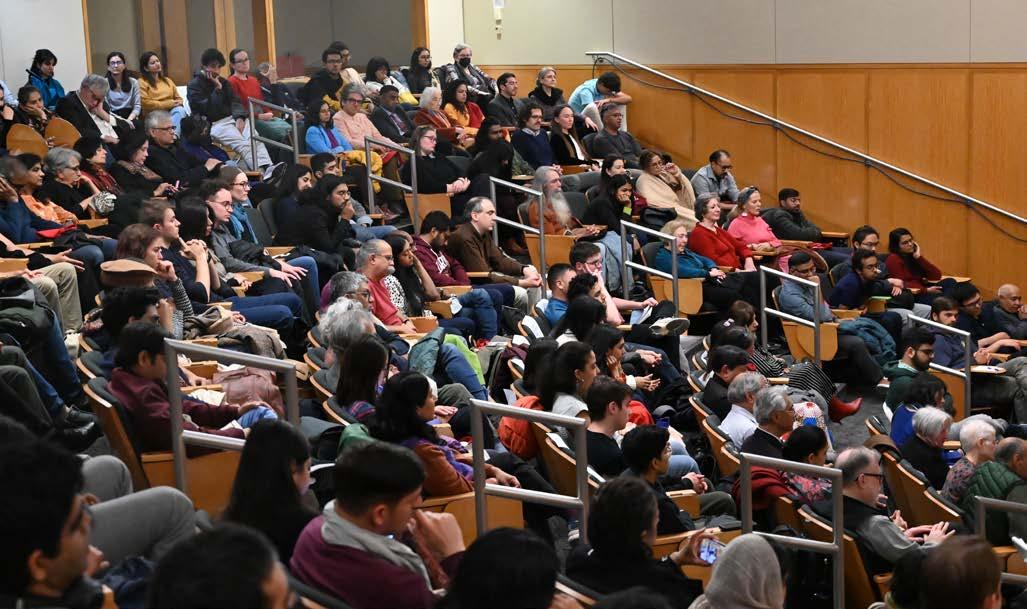

The Mittal Institute’s Visiting Artist Fellowship is a unique opportunity for mid-career visual artists from South Asia to spend eight weeks on Harvard’s campus, where they refine their craft, explore new ideas, and engage with the University’s vibrant academic and cultural community.
In Fall 2024, the fellowship welcomed Saurav Ghimire, a filmmaker and researcher from Kathmandu, Nepal, who blends fiction, experimental forms, and archival material to explore deeply personal yet politically resonant themes. His short film, “Songs of Love and Hate,” premiered at the Berlinale and received a Special Jury Mention for its poetic reflection on intimacy and social constraints.
In Spring 2025, the Mittal Institute hosted three VAFs: Parul Gupta, Masuma Halai Khwaja, and Abir Abdullah. Parul Gupta, an Indian multidisciplinary artist, redefines drawing through site-responsive sculptures and installations that investigate spatial perception, architectural movement, and light. Her work offers immersive experiences that collapse boundaries between body, space, and geometry. Masuma Halai Khwaja, a Pakistani artist, uses fiber, drawing, and mixed media to counter dominant historical narratives. Her art draws from oral histories and personal memory to examine the lingering effects of Partition, forced migration, and state-sponsored erasure—reclaiming marginalized voices through tactile and symbolic storytelling. Abir Abdullah, a Bangladeshi photographer and educator, brought his long-standing commitment to documentary storytelling, particularly his series, “Climate Migrants – On the Frontline of Climate Change,” which chronicles the lives of Bangladeshis displaced by rising seas and environmental instability. His work foregrounds the human cost of climate change in one of the world’s most vulnerable regions.
The Visiting Artist Fellowship continues to foster artistic excellence and critical dialogue, deepening Harvard’s engagement with South Asia’s diverse, creative voices and enabling meaningful cultural exchange on global issues.


Saurav Ghimire is a filmmaker and researcher from Kathmandu, Nepal, whose work explores personal and political narratives through a diverse range of storytelling forms: fiction, experimental, essay, and docu-fiction. Drawing deeply from his own history and experiences, his films resonate with universal themes while addressing the social, cultural, and historical layers embedded in his personal life.
A notable aspect of his work is his use of video archives. In his short film, “Songs of Love and Hate,” Ghimire weaves together a third cinematic world from carefully selected images, sounds, and words, creating a unique space to reflect on love—romantic love as well as its social contexts and challenges. The film (17 mins, Nepal/Belgium) premiered at the Berlinale Generation 14 Plus competition, where it received the Special

Jury Mention. His earlier short film, “Barking Dogs,” (14 mins, Nepal) earned accolades, winning Best Experimental


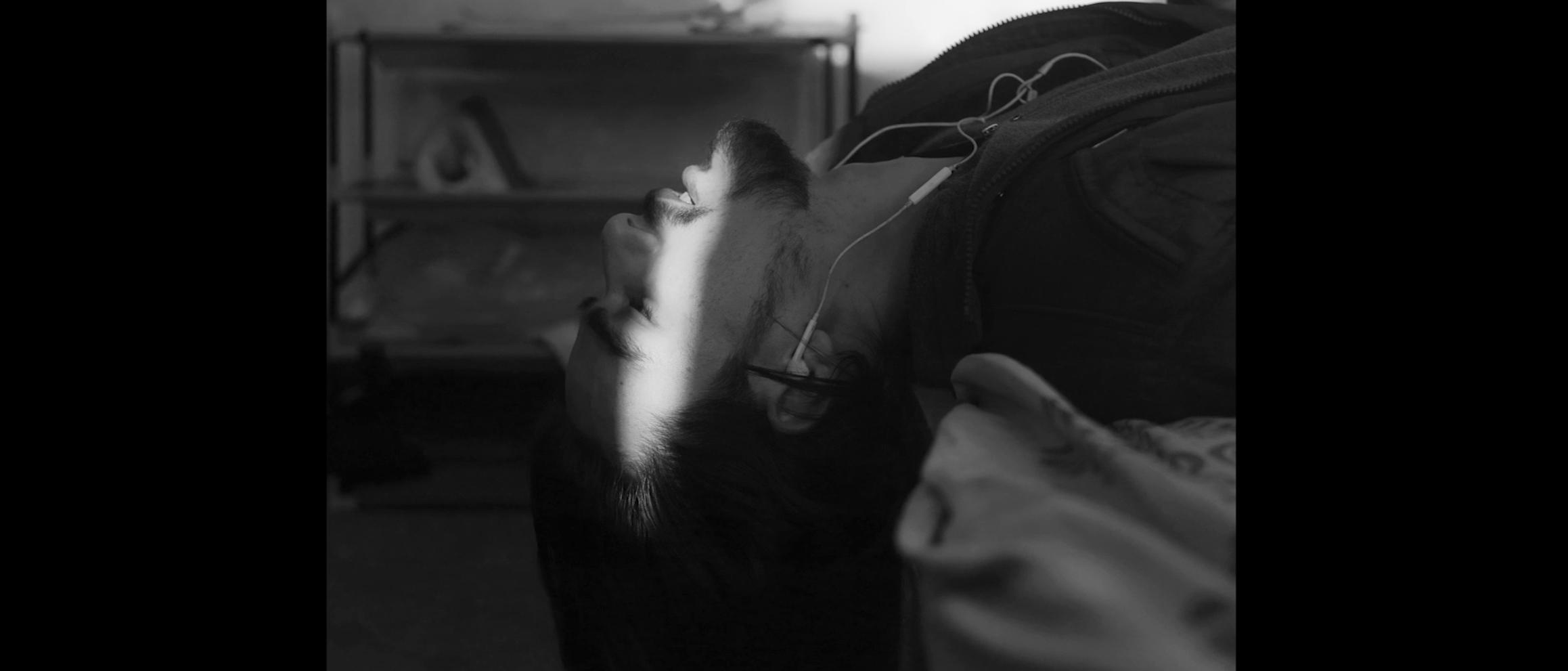
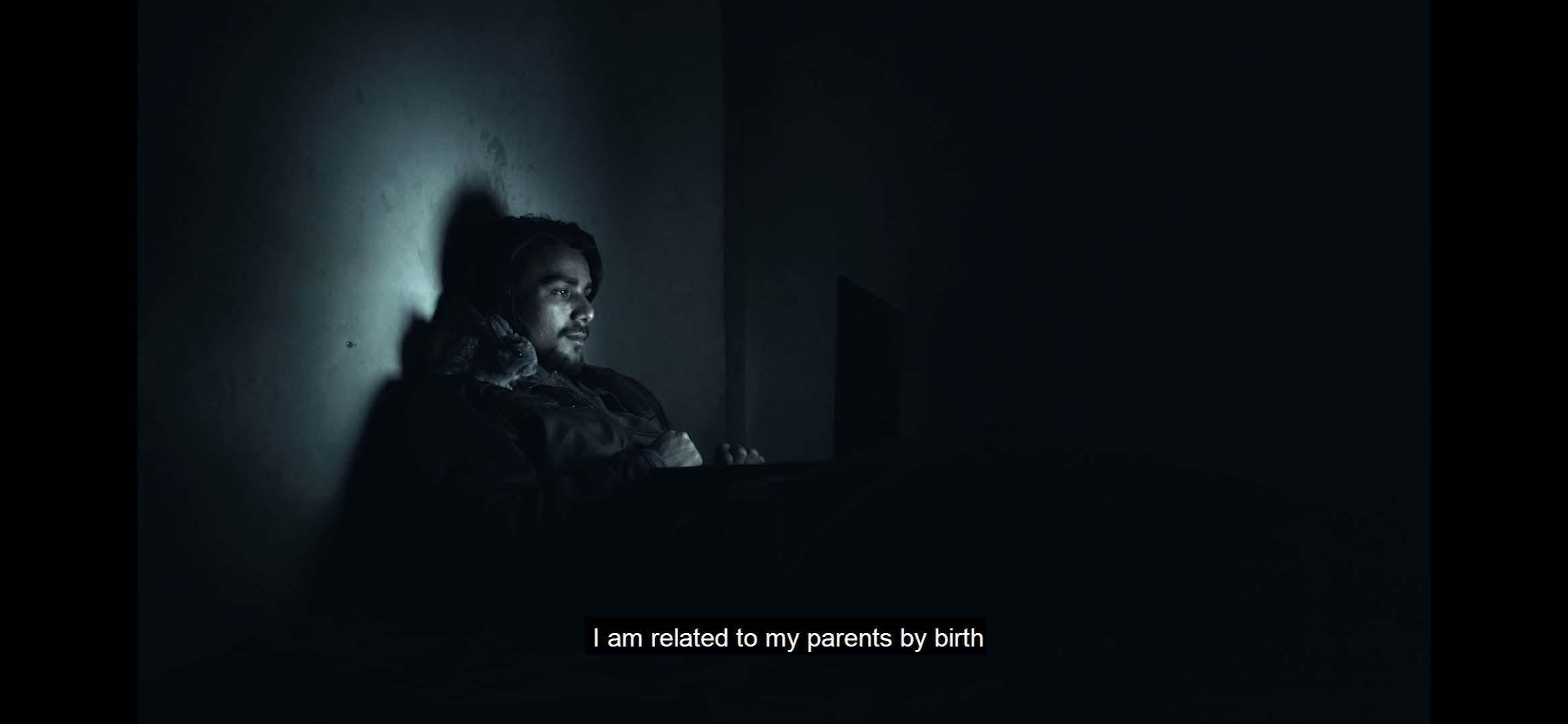
Abir Abdullah is an independent visual storyteller and photography educator. He served as the principal of Pathshala South Asian Media Institute in Bangladesh from 2018 to 2020 and worked as a correspondent for the European Pressphoto Agency (EPA) from 2005 to 2018. He has participated in Pleasure of Life, a three-year seminar supported by the World Press Photo Foundation in the Netherlands. His work has received numerous accolades, including the Mother Jones Award (2001) for his series on Bangladesh’s 1971 Liberation War veterans and the NPPA Best of Photojournalism Award (2008) in the National Disaster category. In 2013, he won the Alexia Foundation Professional Grant and received the Leica Reportage Prize at the Vevey International Photography Awards in Switzerland.
In his photo series, “Climate Migrants – On the Frontline of Climate Change,”
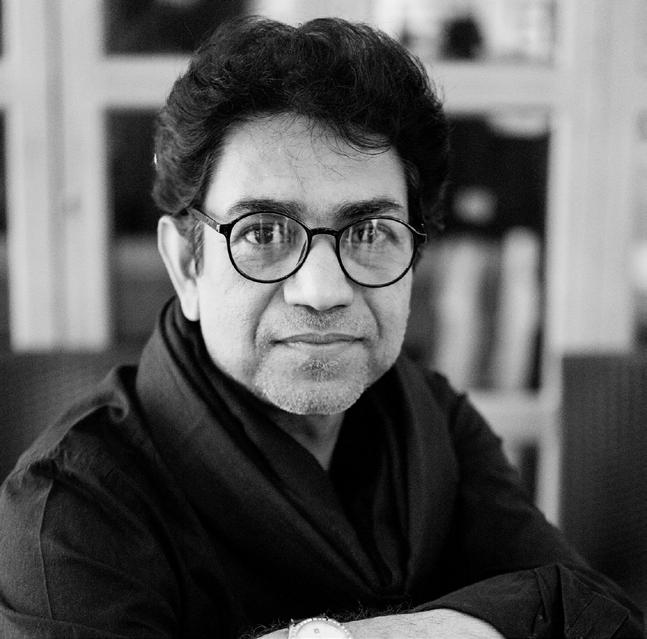
Abdullah explores the climate crisis in Bangladesh, where rising waters, extreme weather, and salinity has dis-
placed millions of people from their homes and livelihoods.





Parul Gupta is a multidisciplinary artist working at the intersection of art and architecture, expanding the concept of drawing into site-specific interventions, spatial installations, sculptures, kinetic works, photographs, and works on paper. Her work investigates architectural phenomenology and movement in architecture, where shifts in perspective, geometry, and light shape the way bodies engage with built environments.
Gupta is the recipient of the Pollock Krasner Foundation Grant 2025. She was the winner of the Sovereign Asian Art Award in 2023 and was shortlisted for the Shergill Sundaram Installation Art Award in 2019. She has held solo exhibitions at Nature Morte (2025 & 2021) and Gallery Lakeeren (2014).

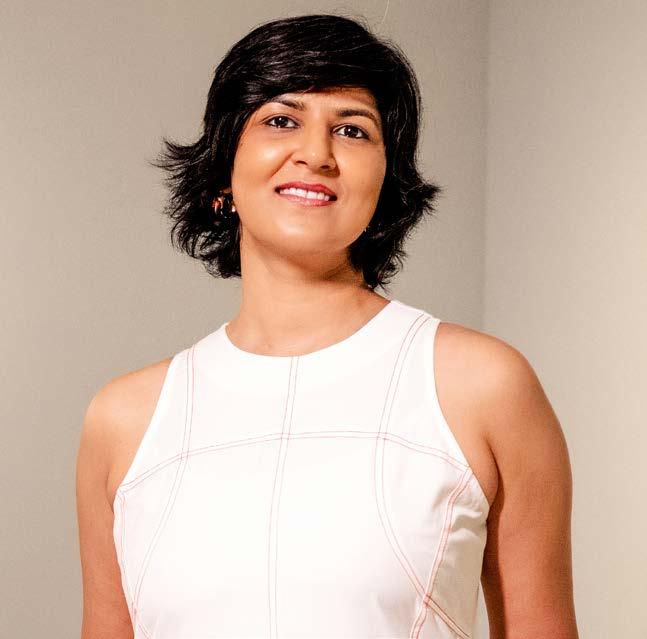


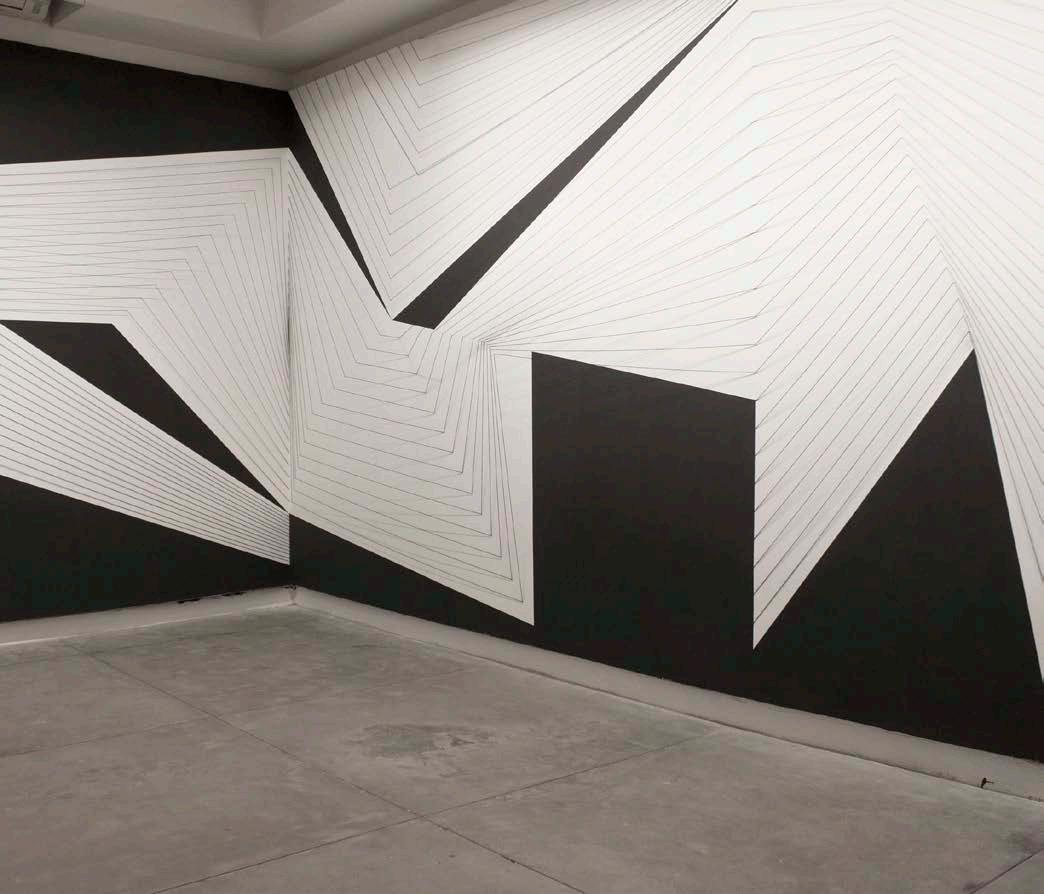

Masuma Halai Khwaja is a fine artist who works with fabrics and integrates embroidery to symbolize the fragmentation of traditions in the face of globalization. Informed by oral accounts and personal experiences, Khwaja’s artworks counter state-fed narratives and unilateral textbook versions of history by addressing the psychological and sociological undercurrents of strife and forced migrations. She investigates their impact on languages, dress codes, religion, and mindsets, examining how personal histories intersect with broader socio-political realities
Khwaja has won multiple accolades, including the Excellence Award at the Fiber Art Biennales in China in 2016 and 2020. Her art is represented in private collections across Dubai, Qatar, Germany, Denmark, Singapore, England, Canada, the U.S., and Pakistan.

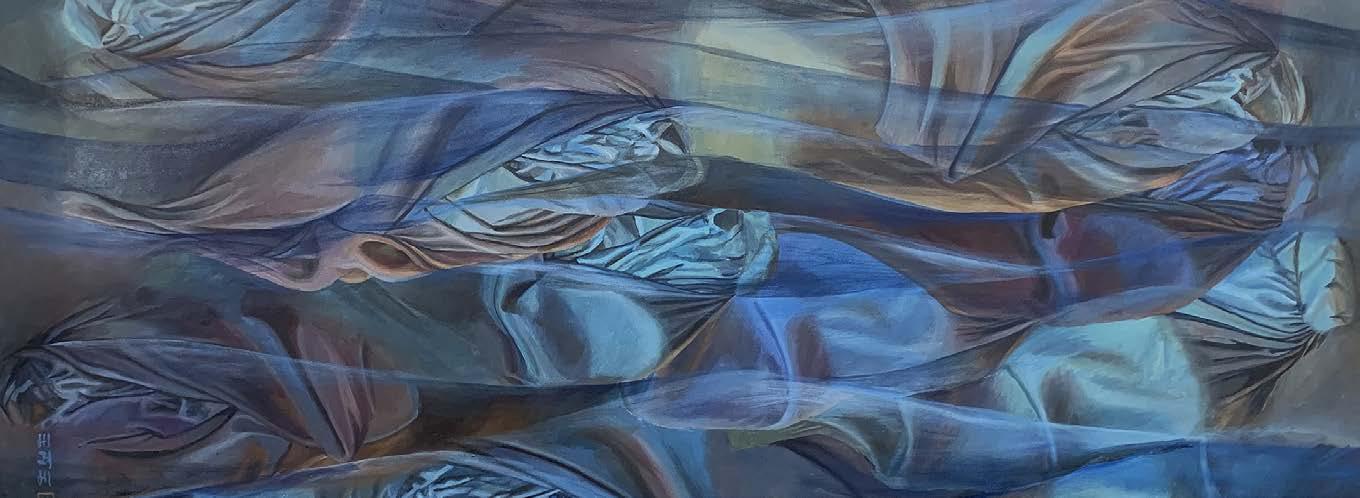
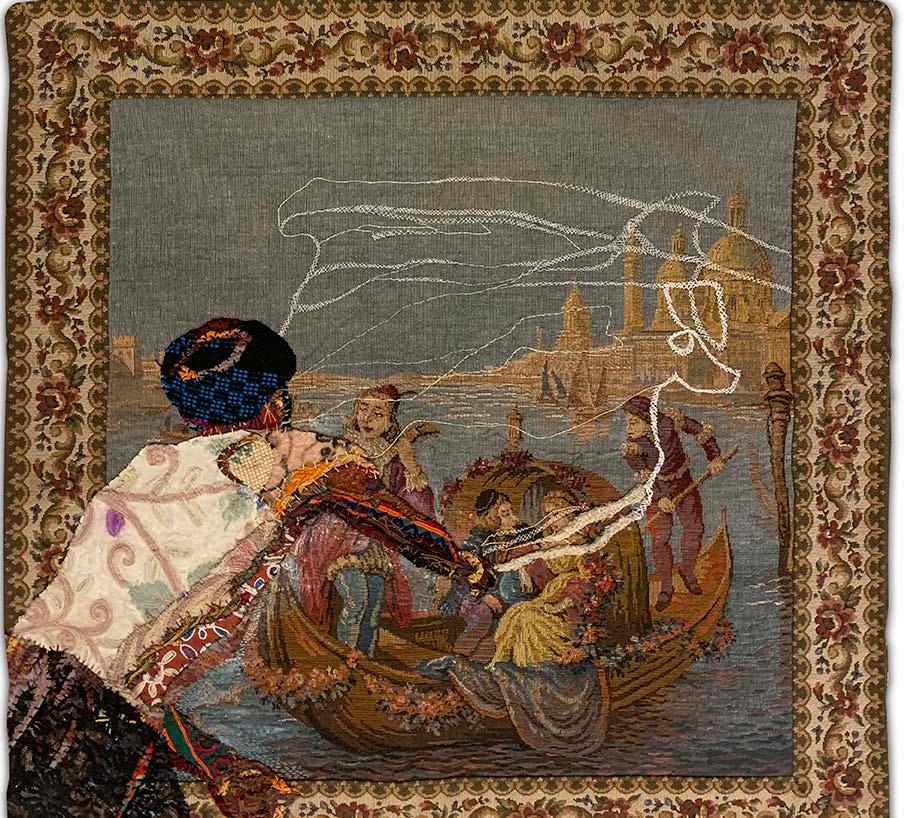
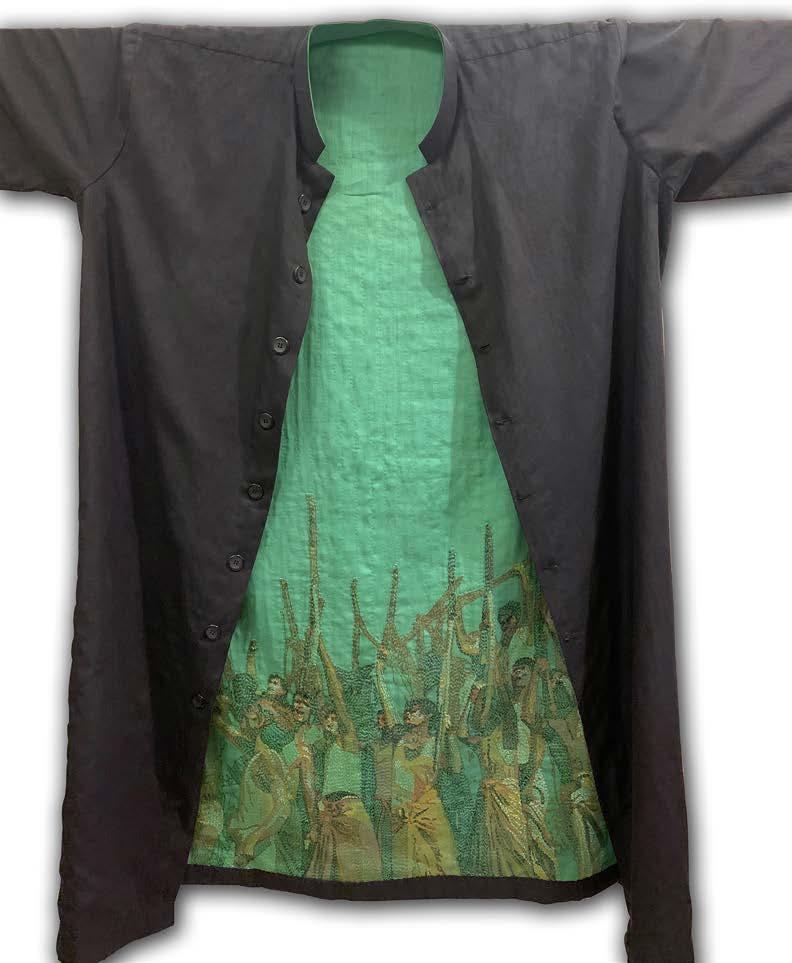
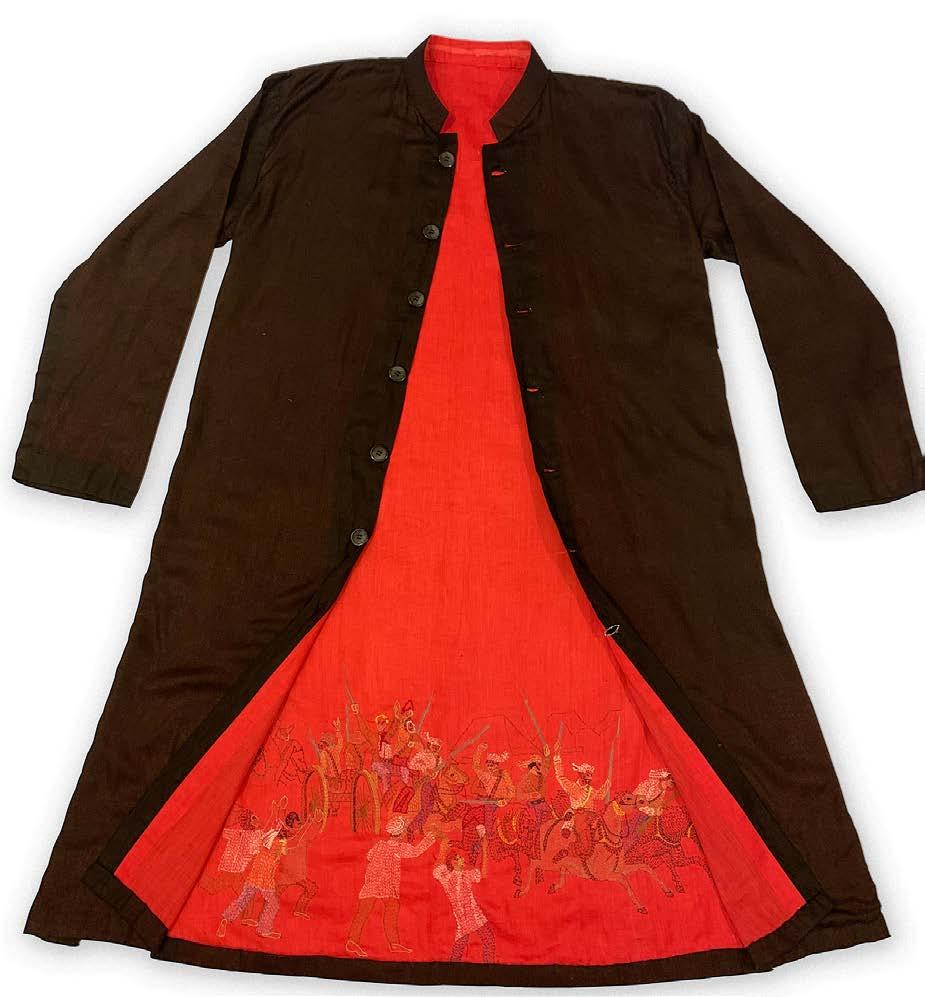

Furthering its journey to bridge art history research with scientific analysis, the Mapping Color in HistoryTM (MCH) project has traveled from Mumbai to Jaipur to investigate 18th- to 19th-century artworks.
In collaboration with the City Palace Museum Jaipur, the team analyzed five large-format Rajput court paintings by renowned artist Sahib Ram, known for his depictions of the Maharajas of Jaipur. Using non-invasive methods—including multispectral imaging, microscopy, reflectance spectroscopy, and X-ray fluorescence—the study revealed detailed insights into the artist’s pigment palette, its evolution, and the materials and methods used. Illustrated folios from the Devi Mahatmya and Matsyapuran manuscripts were also examined, revealing more on regional pigment use and artistic practices.
This fieldwork reflects MCH’s interdisciplinary approach. In May 2024, the Harvard Gazette profiled the project’s origins and its database that links scientific and art historical data. The team’s research article, “Characterization of Indian Pigments: Investigating the Color Palette of a Traditional Jaipuri Workshop,” was published in May 2025 in the prestigious journal Heritage Science. Based on pigment samples collected from a Jaipuri artist’s workshop by Anjali Jain, the study was led by Celia Chari, with contributions from Katherine Eremin, Richard Newman, Anjali Jain, and Jinah Kim The journal publication represents the project’s commitment to rigorous, collaborative, and impactful research at the intersection of science and the humanities.
Mapping Color in HistoryTM is a digital research platform led by Jinah Kim, George P. Bickford Professor of Indian & South Asian Art and Professor of South Asian Studies, that brings together scientific data drawn from existing and ongoing material analyses of pigments, especially in Asian painting, to put them in a historical perspective. A major component, MCH-India, focuses on collaborative research on historical pigments in India to enhance the understanding of the global history of color and pigments. By deploying the MCH Mobile Heritage Lab for site-specific research in museums and archives in India, the project collects valuable data on historical pigments and promotes research-based conservation practices. Initially established through the Tata-Mittal Institute grant in late 2019, the lab has expanded through additional faculty research grants from the Mittal Institute.
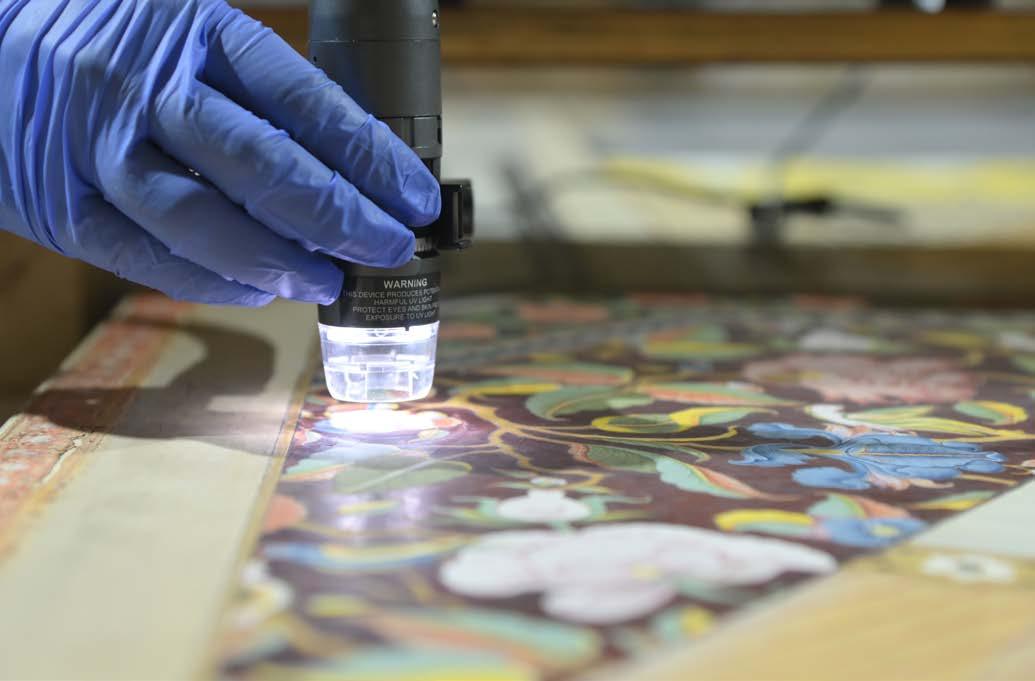
Digital microscopy of a painted area to observe details under high magnification.
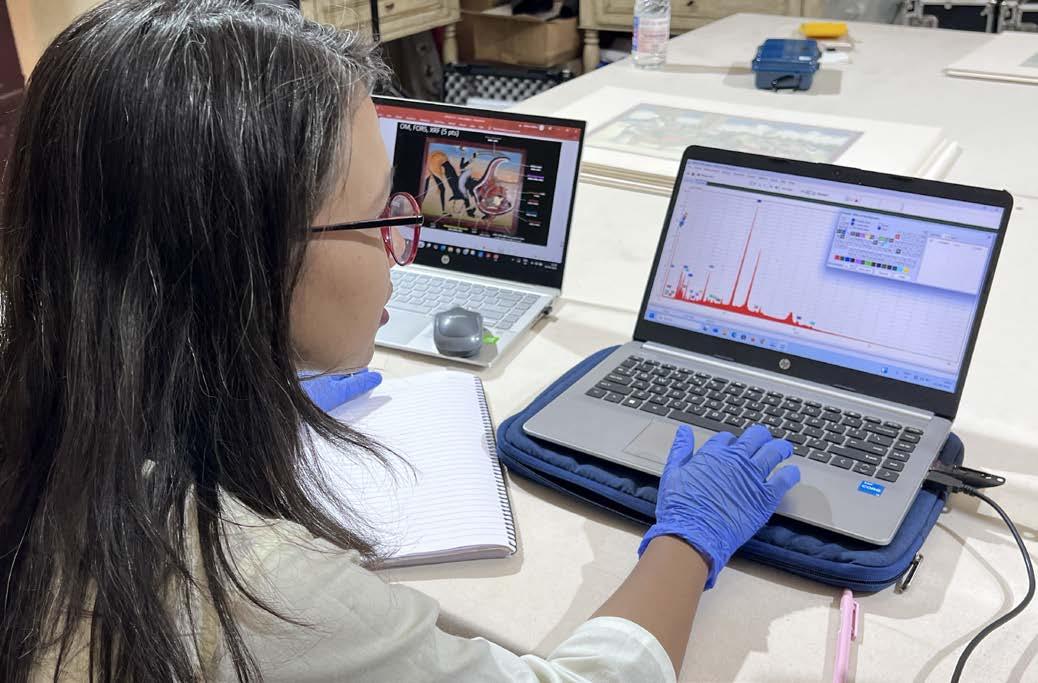
Jain examining the elemental peaks in a graph generated using X-ray fluorescence (XRF) analysis.

Anjali Jain (Research manager, Arts Program - MCH) undertaking non-invasive microscopic analysis on a large format miniature painting by Sahib Ram. The incised gold decoration in the headdress of the figure is visible on the screen connected to the digital microscope.
Learn more about the Mapping Color in History project here:

Read the Harvard Gazette article here:

The traveling exhibition, The Architectures of Transition – Emerging Practices in South Asia, curated by Prof. Rahul Mehrotra and former GSD students Pranav Thole and Devashree Shah, began its journey across India and the wider region, showcasing the work of emergent architectural practices that engage with architecture, landscape, and infrastructure in the public realm. The exhibition was designed to test and reflect on the knowledge and insights generated through the earlier components of the project—namely, the book “Architectures of Transition: Emergent Practices in South Asia,” the lecture series, and the conference.
As it travels through various South Asian countries, local curators have been invited to contribute additional practices at each stop, informed by the evolving framings of the project. These local collaborations introduced diverse curatorial approaches and expanded the lenses through which architectural practices were viewed. The insights gathered from these travels and local dialogues will be brought together in a concluding edition in Mumbai, scheduled from March 17 to 22, 2026.
Initiated by the Harvard Graduate School of Design, the traveling exhibition is supported by the Mittal Institute and Architecture Foundation, India, along with JSW, Prakriti Foundation, and Amardeep Designs.
The exhibition is part of the broader research project, The State of Architecture in South Asia, which asks: Does architecture matter in a state of transition? To further this thought, a session titled, “Historic Water Architecture and its Contemporarization – The State of Architecture in South Asia with A. Mridul,” was held in November 2024, exploring the contextual study of historic water architecture, its decline, and contemporary efforts toward water sufficiency. Another session, “Good Density as Urban Justice,” held in March 2025, reframed density not as a threat, but as a historical and dynamic opportunity to expand the conditions for justice.
The State of Architecture in South Asia is a multi-year research initiative anchored by the Mittal Institute and the Harvard Graduate School of Design (GSD), supported by the South Asia Graduate School of Design Student Group and the Architecture Foundation, India. The project explores fundamental questions about the research and practice of architecture in South Asia, a region undergoing numerous transitions. The project examines how architecture reflects these changes and addresses issues like public agency, architectural education, and equity, with a focus on architecture in the public realm. It values both intra-generational and inter-generational dialogues, using a structure that includes lectures, conferences, podcasts, publications, and a traveling exhibition to ensure a comprehensive exploration of architectural issues within a temporal context.

Dec 14 – 16, 2023
EXHIBITION AT INDIA INTERNATIONAL CENTRE
New Delhi, India
Supported by the Mittal Institute
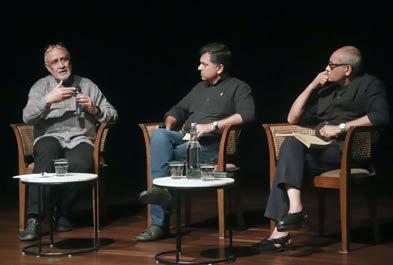
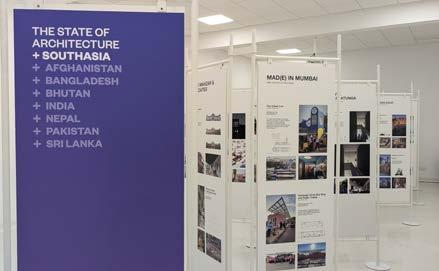
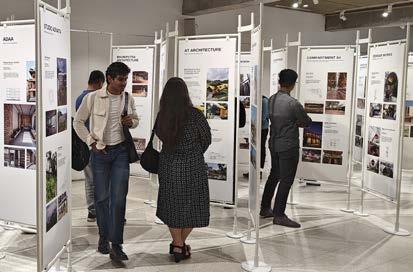
Aug 5 – 8, 2024
EXHIBITION AT ALLIANCE FRANÇAISE
Chennai, India
Supported by the Prakriti Foundation
Feb 15 - 16, 2025
EXHIBITION AT AVANI
INSTITUTE OF DESIGN
Calicut, India
Supported by Avani Institute of Design
March 1 – 2, 2025
EXHIBITION AT ROTARY CLUB
Kochi, India
Supported by Avani Institute of Design
Learn more about the State of Architecture in South Asia project here:
January 7 – 12, 2025
EXHIBITION AT BANGALORE INTERNATIONAL CENTRE
Bengaluru, India
Supported by Prakriti Foundation
May 2025
EXHIBITION IN KABUL Afghanistan
Supported by Aga Khan Cultural Services (AKDN)


Growing up in Kolkata, Vishal Khandelwal was first introduced to the art history field right before he left India to attend DePauw University in Indiana. An art historian friend from Kolkata encouraged him to take undergraduate classes in the field, and this advice proved to be a turning point in Khandelwal’s academic journey.
“When I took classes at DePauw, I found the questions my professors asked deeply compelling,” Khandelwal recalls. “We were analyzing art and architectural works in all their complexity and
Vishal Khandelwal, Assistant Professor of History of Art and Architecture in Harvard’s Department of History of Art and Architecture, is an avid supporter of the arts of the Mittal Institute’s Arts Program. At the National Institute of Design (NID) in Ahmedabad, India, he unraveled a history of the academy’s postcolonial architecture and design education in relation to similar educational cultures in other parts of the world.
thinking critically about the people behind them—those who created, viewed, or used them. These classes pushed me to reflect on how individuals interact with one another, how we perceive ourselves in relation to others, and how art and architecture serve as powerful vehicles for exploring these broader, human questions.”
Khandelwal’s coursework introduced him to two pivotal mentors—a medieval art historian and a modern art historian—who encouraged him to blend his burgeoning interest in art and ar-
chitectural history with research on South Asia. After he studied abroad in Rome and later in Oxford, his experiences helped him shape a research topic that would form the foundation of his PhD applications.
After enrolling in a PhD program at the University of Michigan, Khandelwal took courses not only in art and architectural history but also in anthropology and history. However, it was his fieldwork that truly solidified his focus. Through grant funding from the university and from external organiza-

In the Fall and Spring semesters, Vishal Khandelwal moderated presentations by Visiting Artist Fellows. In the photo, he is in conversation with Saurav Ghimire, a Nepali filmmaker, in October 2024.
tions, Khandelwal was able to travel to the National Institute of Design (NID) in Ahmedabad, India, to explore their archives – a project that evolved into his dissertation and now his current book manuscript, tentatively titled, Crafted Visions: India and the Values of Design, 1955-1985.
“It was a privilege to have the funding and time to travel to sites and archives because with research in art and architectural history, we have to travel to things; things don’t generally travel to us!” says Khandelwal. “And when I went off into the field, I found this amazing trove of materials on postcolonial architecture and design education that few had looked at before.”
In the NID official archive, Khandelwal began unraveling a history of the academy in relation to similar educational cultures in other parts of the world. He tracked specific practitioners who taught visual communication, tex-

Vishal Khandelwal presented his book manuscript titled, “Crafted Visions: India and the Values of Design, 1955-1985” in New Delhi in December 2024.
tile design, architecture, and product design at the NID between 1955 and 1985, and who were all concerned in some way or another about crafts objects and crafts-related livelihoods from within the capacious field of design studies. And he worked with families of artists, designers, architects, and critics to source archival materials and original design and art objects that became the bulwark of his research. Khandelwal says he connected families with institutions such as the Asia Art Archive in India to help in digitization efforts and is encouraged by the fact that more families of designers, architects, and artists have, over the years, been coming forward with archival materials to add to various institutional collections.
As Khandelwal finalizes his manuscript for publication, he is also embarking on a new project that explores the intersections of architecture and textile art during the modern period. “The proj-
ect aims to understand what happens when we think about buildings through a medium that is flexible and malleable – qualities often seen as the opposite of traditional architecture,” Khandelwal explains. “During the twentieth century—which is my primary focus—but even before that, textile art in South Asia and elsewhere often came into serious conversation with parallel developments in architecture.” Khandelwal’s research investigates how crafts and textiles contributed to the shift away from the high modernism of the 1950s and toward the 1970s, when architects began embracing regionalist idioms within their practices. Some of these ideas about the historical relationship between architecture and textiles were put to test through a seminar titled “Architectures of Cloth,” co-designed and co-taught in Spring 2024 by Khandelwal and his colleague Maria Gough, the Joseph Pulitzer Jr. Professor of Modern Art at Harvard.
AUGUST 3 – 10, 2024
The Mittal Institute, in collaboration with the American Center New Delhi and Anant Art, organized “Interwoven Ecosystems,” an exhibition held at the American Center from August 3 to 10, 2024, which explored ecological networks and climate migration through art. Featuring Visiting Artist Fellowship (VAF) alumni Dhara Mehrotra and Paribartana Mohanty, the exhibition offered distinct perspectives shaped by their diverse practices. The exhibit opened with a
panel discussion featuring Kathleen Fox, Regional Public Engagement Specialist for South Asia at the U.S. Embassy; Radhika Chopra, member of the Mittal Institute’s Arts Advisory Council; Vishal Khandelwal, Assistant Professor of History of Art and Architecture at Harvard University; and the two exhibiting artists. The conversation was moderated by Hitesh Hathi, Executive Director of the Mittal Institute. Following the launch, the artists joined Vishal Khandelwal for a conversation and walkthrough with the audience.



The Mittal Institute, in collaboration with the National Foundation for India (NFI), hosted the exhibition, “To Reach the Source: Stepwells of India” at the India Habitat Centre, New Delhi, from March 18 to April 2, 2025. The exhibition featured the work of documentary photographer Claudio Cambon, whose practice combines photography, archival research, and artistic interpretation to reframe stepwells not as historic artifacts, but as enduring models of sustainable architecture.
At the exhibition’s opening, speakers included Biraj Patnaik, Executive Director of NFI; Daniel P. Schrag, Sturgis Hooper Professor of Geology and Professor of Environmental Science and Engineering, Harvard University; philanthropist Rohini Nilekani; and Hitesh Hathi, Executive Director of the Mittal Institute. In his artist’s address, Cambon reflected on stepwells as more than just utilitarian water sources, describing them as sanctuaries from extreme heat, spaces of spiritual reverence, and centers of community life, highlighting their relevance in an era of climate crisis and rapid urbanization.



In the academic year 2024-25, the multimedia exhibition, HUM SAB EK (We Are One), began an international journey after debuting at Harvard University, aiming to engage key
HUM SAB EK’s Journey
stakeholder communities across the development sector, academia, philanthropic institutions, and multilateral organizations. The exhibition made stops at three locations in the United States and at the International Labor Organization in Switzerland, with additional global destinations planned before its arrival in India.
1. Harvard’s Center for Government and International Studies, Cambridge, MA
2. Clinton Global Initiative, New York, NY
3. World Bank Headquarters, Washington, DC
4. Johns Hopkins University, Washington, DC
5. International Labor Organization (ILO), Geneva, Switzerland

HUM SAB EK (We Are One) showcases the experiences and resilient strategies of women in India’s informal sector during the COVID-19 pandemic. The traveling exhibition emerged from research conducted by Prof. Satchit Balsari in Gujarat, India, and was created by an interdisciplinary team of Harvard graduate students.

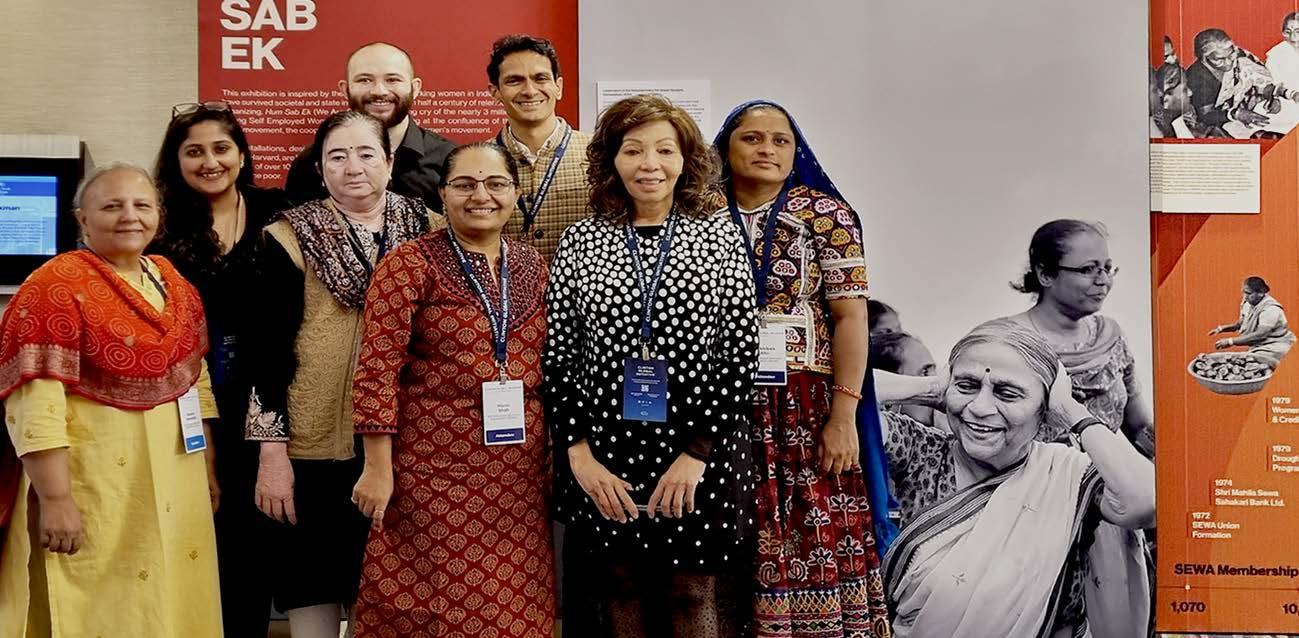
SEPTEMBER 29, 2024
In collaboration with the Asia Society in New York City, the Mittal Institute co-hosted a conversation with acclaimed filmmakers Mira Nair, Gurinder Chadha, and Deepa Mehta in New York City. Moderated by Aroon Shivdasani, the discussion explored their influential contributions to global cinema and the role of their Punjabi diasporic identities.
Watch the talk below:

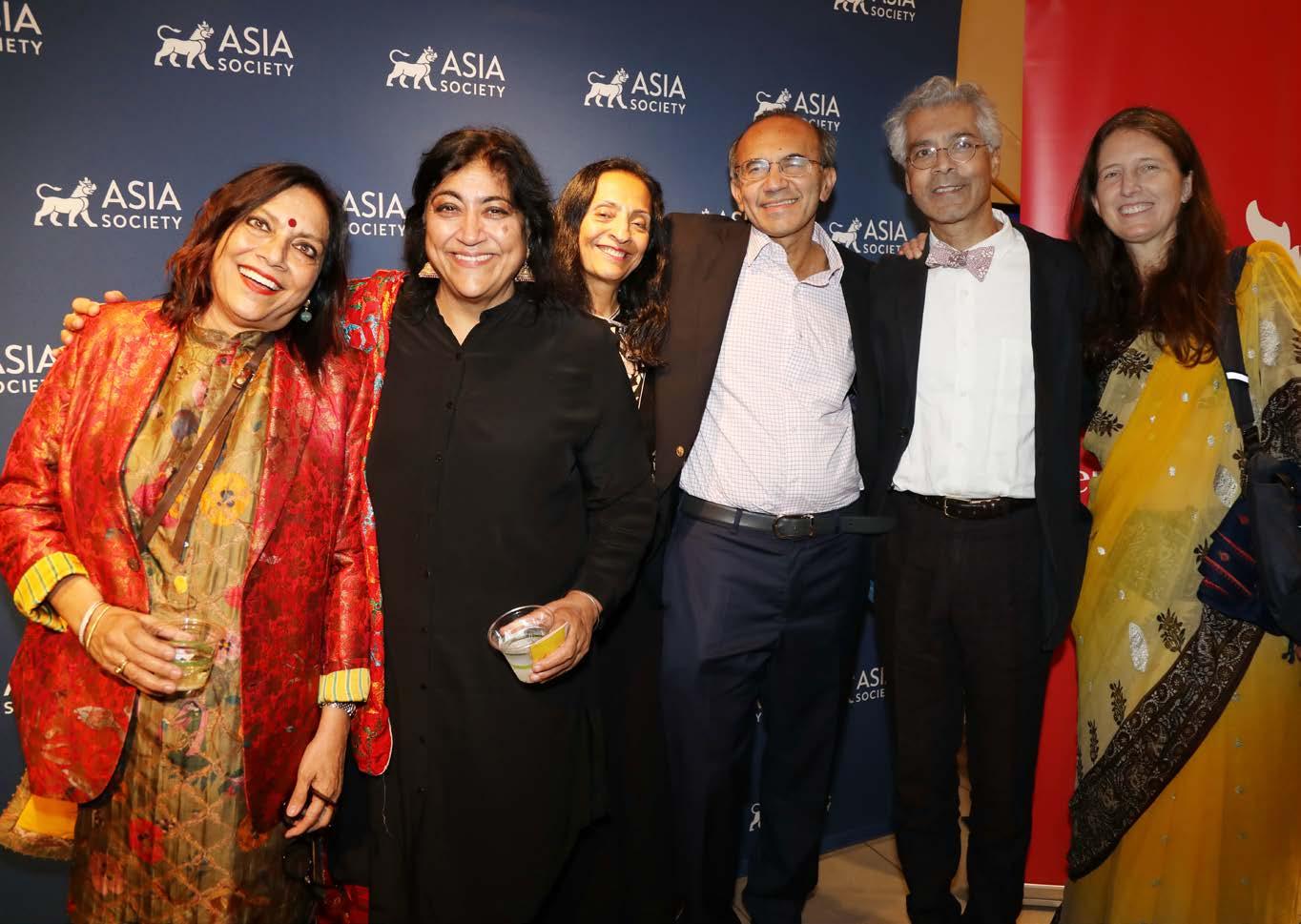

Aditya and Megha Mittal (UK)
Lakshmi and Usha Mittal (UK)
KP Balaraj, MBA ’97 (India), Chair, Advisory Council
Sumir Chadha, MBA ’97 (USA), Chair, Advisory Council
Dipti Mathur (USA), Chair, Arts Council
Tarun Khanna (USA), Faculty Director, The Lakshmi Mittal and Family South Asia Institute
ADVISORY COUNCIL
Chairs:
KP Balaraj, MBA ’97 (India)
Sumir Chadha, MBA ’97 (USA)
Aditya and Megha Mittal (UK)
Lakshmi and Usha Mittal (UK)
Syed Babar Ali, AMP ’73 (Pakistan)
Kushagra Nayan Bajaj (India)
Lucinda Bhavsar MBA ’97 (USA)
Kuntala Das and Bharat Das ’08, s/o late Purandar Das (USA)
Mark Fuller ’75, MBA ’78, JD ’79, and Jo Froman (USA)
Meera Gandhi (USA)
Vikram Gandhi, MBA ’89, ExEd ’00 (USA/India)
Nandita Prakash Glazer (USA)
Mala Haarmann ’91, MBA ’96 (UK)
Rajiv Kothari OPM '14 (USA)
Anuradha and Anand Mahindra ’77, MBA ’81 (India)
Dipti Mathur (USA)
Karen ’82, and Sanjeev Mehra ’82, MBA ’86 (USA)
Chandrika and Dalip Pathak (UK)
Chandni and Mukesh Prasad ’93 (USA)
Sribala Subramanian and Arvind Raghunathan (USA)
Rajiv and Anupa Sahney (India)
Gaurav ’96 and Falguni Shah (USA)
Vimal MBA ’02 and Punyashree Shah (USA)
Parul and Gaurav Swarup, MBA ’80 (India)
Tom Varkey MBA ’97 (USA)
Jasvinder Khaira and Monica Vaughan-Khaira (USA)
Osman Khalid Waheed ’93 (Pakistan)
Arshad Zakaria ’85, MBA ’87 (USA)
Faculty Director: Jinah Kim, George P. Bickford Professor of Indian and South Asian Art and Professor of South Asian Studies, Harvard University (USA)
Chair: Dipti Mathur (USA)
Arts Program Advisors: Shanay Jhaveri (USA)
Meena Sonea Hewett (USA)
Archan Basu ’93 and Madeline Jie Wang ’97 (USA)
Poonam Bhagat (India)
Anurag Bhargava (India/USA)
Radhika Chopra MPP ’96 (India)
Sunil Hirani (USA)
Bharti Malkani (USA)
Chandrika Pathak (UK/India)
Pinky and Sanjay Reddy (India)
Omar Saeed (Pakistan)
Sana Rezwan Sait (USA)
Nadia and Rajeeb Samdani (Bangladesh)
Shilpa Sanger (USA)
Gaurav ’96 and Falguni Shah (USA)
Osman Khalid Waheed ’93 (Pakistan)
FRIENDS OF THE INSTITUTE
Nadeem Elahi MBA ’01 (Pakistan)
Namita Luthra and Anil Shrivastava AB '90, MBA '96 (USA)
Usha and Diaz Neesamoney (USA)
Anwarul Quadir Foundation (USA)
INDIA ADVISORY BOARD
Aditya and Megha Mittal (UK)
Lakshmi and Usha Mittal (UK)
Gobind Akoi GMP ’10 (India)
KP Balaraj MBA ’97 (India)
Sumir Chadha MBA ’97 (USA)
Radhika Chopra MPP ’96 and Rajan Anandan (India)
Chair: Tarun Khanna, Faculty Director; Jorge Paulo Lemann Professor, Harvard Business School
Homi Bhabha, Anne F. Rothenberg Professor of the Humanities, Harvard Faculty of Arts and Sciences
Jacqueline Bhabha, Professor of the Practice of Health and Human Rights, Harvard TH Chan School of Public Health; Jeremiah Smith, Jr. Lecturer in Law, Harvard Law School; Adjunct Lecturer, Harvard Kennedy School
Martha Chen, Mittal Institute Associate
Sheila Jasanoff, Pforzheimer Professor of Science and Technology Studies, Harvard Kennedy School
Asim Khwaja, Sumitomo-FASID Professor of International Finance and Development, Harvard Kennedy School
Jinah Kim, George P. Bickford Professor of Indian and South Asian Art and Professor of South Asian Studies, Harvard University
Jennifer Leaning, Senior Research Fellow at the FXB Center for Health and Human Rights; Professor of the Practice at Harvard T.H Chan School of Public Health
Rahul Mehrotra, John T. Dunlop Professor in Housing and Urbanization, Harvard Graduate School of Design
Venkatesh Murthy, Raymond Leo Erikson Life Sciences Professor of Molecular and Cellular Biology, Harvard University
Vikram Patel, Paul Farmer Professor and Chair of Global Health and Social Medicine, and Head of the Department of Global Health and Social Medicine, Harvard Medical School
Parimal G. Patil, Professor of Religion and Indian Philosophy, Committee on the Study of Religion; Chair of the Department of South Asian Studies, Harvard University
FACULTY STEERING COMMITTEE
* includes members of Cabinet
Ali Asani, Murray A. Albertson Professor of Middle Eastern Studies; Professor of Indo-Muslim and Islamic Religion and Cultures, Harvard University
Satchit Balsari, Assistant Professor, Emergency Medicine, Harvard Medical School and Beth Israel Deaconess Medical Center
Caroline Buckee, Professor of Epidemiology, Harvard T.H Chan School of Public Health
Diana L. Eck, Professor of Comparative Religion and Indian Studies, Emerita, and Frederic Wertham Research Professor of Law and Psychiatry in Society, Harvard Divinity School
Mashail Malik, Assistant Professor, Department of Government
Durba Mitra, Carol K. Pforzheimer Assistant Professor, Radcliffe Institute; Assistant Professor of Studies of Women, Gender, and Sexuality, Harvard University
Jukka-Pekka Onnela, Assistant Professor of Biostatistics, Harvard T. H. Chan School of Public Health
Sanjay Saini, Professor of Radiology, Harvard Medical School
Daniel Schrag, Sturgis Hooper Professor of Geology, Department of Earth and Planetary Sciences
Ajay Singh, Senior Associate Dean for Postgraduate Medical Education, Harvard Medical School; Director, Master in Medical Sciences in Clinical Investigation (MMSCI) Program
Pawan Sinha, Professor of Vision and Computational Neuroscience, Massachusetts Institute of Technology
Doris Sommer, Ira Jewell Williams, Jr., Professor of Romance Languages and Literatures and in African and African American Studies, Harvard University
Kristen A. Stilt, Professor of Law, Harvard Law School
Ashutosh Varshney, Sol Goldman Professor of International Studies and the Social Sciences and Professor of Political Science, Brown University; Director, Center for Contemporary South Asia, Brown University
Conor Walsh, Paul A. Maeder Professor of Engineering and Applied Sciences, John A. Paulson Harvard School of Engineering and Applied Sciences
Muhammad H. Zaman, Howard Hughes Medical Institute Professor of Biomedical Engineering and International Health, Boston University
Tarun Khanna, Faculty Director; Jorge Paulo Lemann Professor, Harvard Business School
Hitesh M. Hathi, Executive Director
Mirela Vaso, Director of Finance and Administration
Carlin Carr, Assistant Director of Programs and Outreach
Monika Setia, Associate Country Director, Harvard Global Research Support Centre India
CAMBRIDGE
Shubhangi Bhadada, Research Fellow; Project and Research Director, Lancet Citizens’ Commission
*Kartikeya Bhatotia, Climate Fellow
Ahva Davis-Shiva, Financial Associate
Thomas Elliott, Programs and Administrative Coordinator
Kellie Nault, Writer/Editor
Selmon Rafey, Program Manager
Sneha Shrestha, Arts Program Manager
Danielle Wallner, Programs and Administrative Coordinator
Bettina Wyler, Communications Manager
IN-REGION
India
Amit Chaudhary, Administrative & HR Coordinator, Harvard Global Research Support Centre India
Angarika Datta, Communications and Outreach Manager, Harvard Global Research Support Centre India
Garima Gupta, Program Manager, Scienspur
Anjali Jain, Research Manager, Mapping Color in History
Shreya Majumdar, Program Manager, Harvard Global Research Support Centre India
Sushma Mehta, Grant and Finance Manager, Harvard Global Research Support Centre India
*Yuvika Pharaswal, Climate Coordinator, Harvard Global Research Support Centre India
Pakistan
Mariam Chughtai, Pakistan Programs Director
Nepal
Pukar Malla, Nepal Programs Director
*New in FY 2024/25

CGIS South, 4th Floor, 1730 Cambridge Street, Cambridge, MA 02138, USA
B- 43, Middle Circle, Connaught Place, New Delhi - 110001, India
www.mittalsouthasiainstitute.harvard.edu